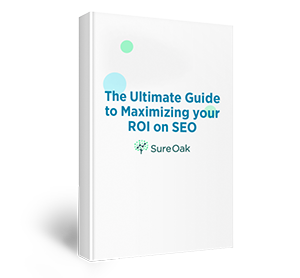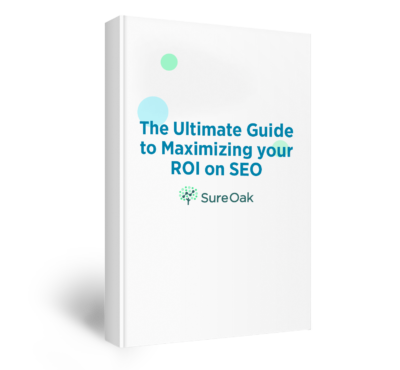What is user intent? The answer may seem obvious, but it’s not always so straightforward. If you own a company that installs wooden privacy fences, knowing whether a customer is looking for fencing installers or fencing lessons when they type in “fencing near me” is pretty important.
Understanding user intent has become the holy grail of online marketing and content creation. As businesses vie for consumers’ attention and loyalty, they need to decipher what users are doing and why. Unlocking the secrets behind search intent can help you create more targeted campaigns, personalized experiences, and ultimately, drive higher conversions.
What can we learn from user intent?
User intent provides insights into the motivations behind a search query. While the fencing example above hinged on different definitions of the same word, that’s not the only way to confuse searcher intent. For example, when someone searches “dandelions in my yard,” do they want to get rid of them? Identify them. Find recipes for them. Any of these could be the driving force behind this search.

Understanding what users want when they conduct a search will give you the information you need to create content that provides them with valuable and appropriate answers. As a result, you’ll be able to improve your search engine rankings and reduce your bounce rate. For example, if a customer wants a recipe for dandelion greens and you give them an article on herbicides, they’re going to click away quickly. However, if that happens often enough, Google will notice that users aren’t satisfied with your content and start ranking it lower.
Types of Search Intent
Search intent can be tricky because only some are looking for the same thing when they type in a particular keyword or phrase. Even among people who are looking for the same general thing (say fencing installers rather than fencing lessons), one person may be looking for a price comparison while another is trying to decide what kind of fence they need. This is why it’s critical to answer the question: What is search intent?
There are three primary types of search intent: informational, navigational, and transactional. Search engines rely on data that you can’t access — such as past searches — to determine what a user wants when they perform a search. However, understanding the different types and considering other factors we’ll address below can shed light on an otherwise confusing search query.
Informational
Informational search intent refers to search queries where users are primarily looking for answers, knowledge, or information about a specific topic, product, or service. These users are typically in their journey’s research or learning phase and have yet to be ready to make a purchase or take immediate action. Instead, their goal is to gather information, educate themselves, or find solutions to a particular problem.
Navigational
Navigational search intent refers to search queries where users have a specific website, brand, or webpage in mind and use the search engine to find it. These users have a particular online destination in mind rather than just general information or answers to a question. Their primary goal is to navigate directly to a known website or resource quickly and efficiently.
Transactional
Transactional search intent refers to search queries where users have a specific goal, such as making a purchase, signing up for a service, downloading a resource, or completing another transaction. These users are further along the buyer’s journey and ready to take action. Their primary objective is to find a website or platform where they can complete the desired transaction with minimal friction.
How does Google Handle User Search Intent?
Google search intent can be mysterious, as Google has continuously evolved its search algorithms to understand better and handle user intent SEO. The search engine giant aims to deliver users the most relevant and useful results based on their queries. To achieve this, Google employs a variety of techniques and technologies, including machine learning, natural language processing (NLP), and semantic search. Some of the key ways Google handles user search intent are:
- Understanding query context through NLP techniques
- Analyzing search behavior, such as click-through rates, dwell time, and bounce rates, to understand how well a particular result satisfies the user’s intent
- Personal factors, such as search history, location, and device type, to personalize search results for individual users
- Knowledge Graph, a vast database that connects entities, facts, and relationships to understand the meaning behind search queries better
- Featured snippets and rich results to satisfy user intent more effectively and improve the overall search experience
- RankBrain and BERT, AI components of Google’s search algorithm that help the search engine better understand complex or ambiguous queries
Best Practices for Understanding User Intent
Although user intent can seem indecipherable, there are strategies you can use to understand it. When you put user intent at the center of your content creation plan, you’ll provide more value and are likely to rank higher in search results.
Analyze the SERPs
Analyzing the Search Engine Results Pages (SERPs) can help you understand user intent, identify content opportunities, and optimize your search intent SEO strategy. Examining the top-ranking pages provides insights into the type of content that search engines consider relevant and useful for a particular keyword or phrase.
Here are some factors to consider when analyzing the SERPs:
- Types of search results, such as organic listings, paid ads, featured snippets, local listings, or image and video results
- Content format for top-ranking results, such as blog posts, articles, videos, infographics, or podcasts
- Content themes and topics can illustrate the scope and depth of information users seek, so you can create content that addresses these needs.
- User experience, page structure, and design of the top-ranking pages, such as headings, subheadings, bullet points, images, or other visual aids that improve readability and user engagement
- On-page SEO elements, such as title tags, meta descriptions, header tags, and keyword usage
- Backlink profiles can help you understand the types of websites and resources that are linking to the top content, providing insights into potential link building opportunities
- Competitor analysis to analyze their content, SEO strategies, and online presence for opportunities to differentiate your content and outrank them in search results
Review other Articles
Reviewing other articles, particularly those from competitors and industry leaders, effectively identify user intent and content opportunities. These articles are the ones that search engines believe provide the best value and most closely meet user intent. Analyze the following elements of top-ranking content for a particular search term:
- Topic selection and subtopics to determine the scope of information users are looking for
- Content depth and quality to serve as a benchmark for your content
- Writing style and tone to gain insights into the kind of content that resonates with your target audience
- Internal and external linking to better understand the types of resources and pages that are considered valuable and relevant
- Engagement metrics, such as social media shares, comments, or likes, to gauge the popularity and effectiveness of the articles
Know Your Target Audience
Knowing your target audience is crucial for creating effective content, tailoring marketing campaigns, and driving engagement and conversions. Use your target audience’s demographics, preferences, pain points, and interests to develop strategies that address their needs. Here are some key steps for getting to know your target audience:
- Define your target audience by creating a clear profile of your ideal customer, including demographics (age, gender, location, income, education), psychographics (interests, hobbies, values, beliefs), and behavioral attributes (online behavior, purchasing patterns, brand preferences).
- Conduct market research such as surveys, interviews, and focus groups, and examine existing data, such as industry reports, market trends, and competitor analysis.
- Analyze customer data from your website, CRM, and social media platforms to gain insights into your existing customers’ behavior and preferences.
- Create buyer personas representing different segments of your target audience.
- Engage with your audience on social media, forums, or other online platforms to learn more about them.
- Monitor online discussions and reviews about your product, service, or industry.
- Track and measure the performance of your content, marketing campaigns, and customer interactions.
- Stay up-to-date with industry trends about your target audience’s changing needs and preferences.
Observe Consumer Behavior
Observing consumer behavior is another useful technique for understanding your target audience, refining your marketing strategies, and improving your products or services. Monitoring how consumers interact with your brand, website, and content shows you trends, preferences, and potential friction points that can impact their experience and decision-making processes.
Here are some methods for effectively observing consumer behavior:
- Use web analytics tools like Google Analytics to track user behavior on your website, including bounce rate, dwell time, pages per session, and conversion rate.
- Implement heatmap and session recording tools such as Hotjar or Crazy Egg to learn how users navigate your site, interact with various elements, and encounter potential issues or friction points. (Make sure to keep an eye on page speed, though!)
- Conduct surveys or collect user feedback to help you tailor your content, products, and services to meet your target audience’s needs better.
- Keep track of user interactions and conversations on social media platforms to understand how your audience perceives your brand, products, or services.
- Conduct A/B tests on various elements of your website, content, or marketing campaigns to understand how different approaches impact consumer behavior.
- Create customer journey maps to visualize the different stages and touchpoints consumers encounter while engaging with your brand.
Ask Google Analytics
Google Analytics is a powerful web analytics tool that helps you track and analyze user behavior on your website. By leveraging the insights provided by Google Analytics, you can better understand your audience, optimize your content, and improve your marketing efforts.

Here are some metrics you can track to understand if your site is meeting user intent:
- Traffic sources, such as organic search, social media, referral, direct, or paid search, to identify the channels that are most effective in driving traffic
- Keywords that users search for before landing on your website to understand the search intent of your audience and optimize your content and SEO strategy
- Landing pages where users enter your website to determine which content performs best with your audience
- Bounce rate, which indicates the percentage of users who leave your website after viewing only one page, which indicates your content needs improvement
- Conversion goals, such as form submissions, newsletter sign-ups, or product purchases, to measure the effectiveness of your content and marketing strategies
- Behavior flow to visualize the paths users take through your website to find any bottlenecks or friction points
Consult a Search Marketing Expert
Search marketing experts have specialized skills to help you create high-ranking content. They can help improve your online presence, optimize your content and marketing strategies, and better understand user intent. Search marketing experts possess extensive knowledge and experience in various aspects of online marketing, such as SEO, content creation, social media, and analytics.
Some benefits of consulting a digital marketing expert include:
- Expertise in industry best practices, trends, and tools to provide guidance on creating and optimizing content, implementing SEO strategies, and maximizing your online visibility
- Customized strategies for tailored marketing strategies that align with your business goals, target audience, and industry
- Performance analysis of your website, content, and marketing campaigns using various analytics tools and metrics
- Save time and resources by providing efficient solutions and strategies, allowing you to focus on other aspects of your business
- Competitor analysis, so you can find gaps, opportunities, and potential threats to gain a competitive edge
- Stay up-to-date with constant changes in trends, algorithms, and best practices
- Training and support for your in-house marketing team to enhance their skills and knowledge in digital marketing
- Measurable results through setting clear goals for your digital marketing efforts and tracking progress towards achieving them to evaluate the effectiveness of your strategies and make data-driven decisions to improve performance
User Intent for SEO is Constantly Changing
You need to be adaptable and flexible to keep up with the ever-evolving landscape of user intent. Rapid technological advancements and widespread adoption of trends can change user intent. What a user means when they search for a keyword today is likely very different from what they were looking for with the same search six months ago. If you need help understanding user intent for SEO more in-depth, schedule a call with us!





